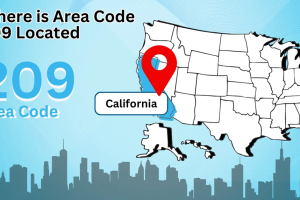Content Attributes
We often hear the word “flats” in the world of fashion design and it is commonly mistaken to as another term for fashion sketches or stencils. The term flats in fashion actually has a more specific definition in the industry and it is not just a regular fashion sketch. A flat is the point of reference for manufacturers once they start working on manufacturing a clothing product. Usually, the flat is of high resolution and is well defined for manufacturing use unlike early sketches which may be too artsy and do not focus on the technical aspects of the product.
The difference of Fashion Stencils to Flats
It shouldn’t be a surprise that fashion stencils and flats always get mistaken for each other; they sound quite similar. Let me try to point out their differences in order to tell which is which and avoid using both terms interchangeably in the industry.
Such a mistake can be an avoidable cause of problems for professionals around the industry to tell whether everyone thinks you are a newbie or not.
Being a newbie is not bad but some people can take advantage of your inexperience and you do not want that to happen. It is much safer to present yourself as someone who is knowledgeable in the industry instead of missing out on simple industry terminologies.
Fashion stencils and sketches are usually drawn on a schematic model/outlined person wearing the clothing product to accentuate the mood or feel of the clothes when worn.
It also shows the fabric movement, proportions and style of the clothing showing mostly the beautiful side of the product and covering up its weaknesses or loopholes that might come with the cut.
On the other hand, flats eliminate the use of art and instead present the product bare and transparently. The focus is on the details wherein specs such as trims and zippers are all highlighted to which sketches cannot properly show.
Digitally Enhanced Flats
There are still a lot of fashion designers who prefer to illustrate their sketches and flats using their hands and pencils. However, industry standard for clothing manufacturers today is to only accept flats with the right symmetry and proportion which makes digital drawing more acceptable to comply the requirements.
Hand drawn illustrations which are going to be used as flats will most likely be redone on a computer to turn it into a digital file. This is why most fashion designers these days stick to learning Adobe Illustrator, Photoshop, Corel Draw and other virtual drawing software to create their flats. These tools make the task convenient with better efficiency since they can be recreated and adapted easily.
Creative Uses of Flats in Fashion
Since flats in fashion design do not focus on aesthetics and art but rather highlight the technical aspects of a clothing product, flats can also be used to expand your creativity and allow you to come up with more ideas simply by looking at a single flat.
There are endless possibilities when you combine different trims, features and cuts of products. Looking at sketches limits your imagination since you are only thinking of the physical appearance and the manufacturing aspects remain a secondary thought.
It is no secret that some fashion designers create an entire fashion line or collection based on a single flat. The team creates a flat for a base product and consider this as a theme.
Other succeeding products for the collection are ripped off from the base product and modified on their own to make them unique and different from their fellow clothing products within the collection.
This has been an efficient method for fashion designers to create a good number of designs without exhausting their creativity.
These days, flats are normally used to present ideas to clients and manufacturers. Sketches are rarely used since the technical aspect of the product are not present in the illustrations.
With flats, the product is laid out bare and transparent. When working around fashion industry professionals, they can easily point out strengths or flaws of the clothing product simply by looking at the flat.
Sketches only show great visual representation but it can be deceiving for manufacturers. Talk to a product design company to convert hand drawings into digital files.
Conclusion
Flats in fashion design highlight the design elements and technicalities of a clothing product which is why the illustrations are more detail-oriented yet simple.
Most clothing lines present flats in 2D with both front and back perspectives and that’s usually it. Some add shadows and shading to the drawings to give it a realistic feel or maybe highlight the fabric being used.
Other than that, the drawings are in high resolution but are basic and simple. The important thing is to have the details covered and expose the technicalities without trying too hard.



